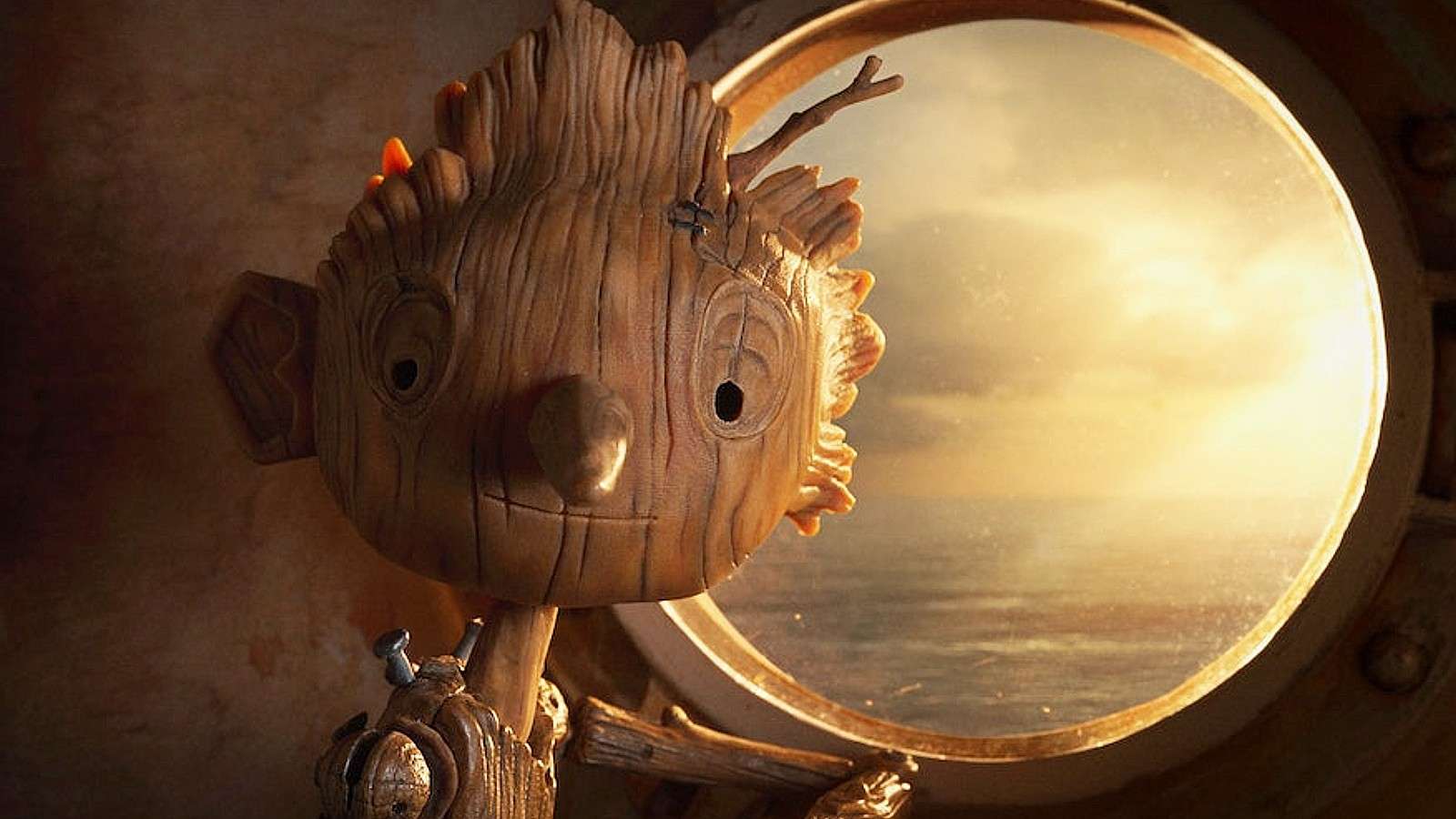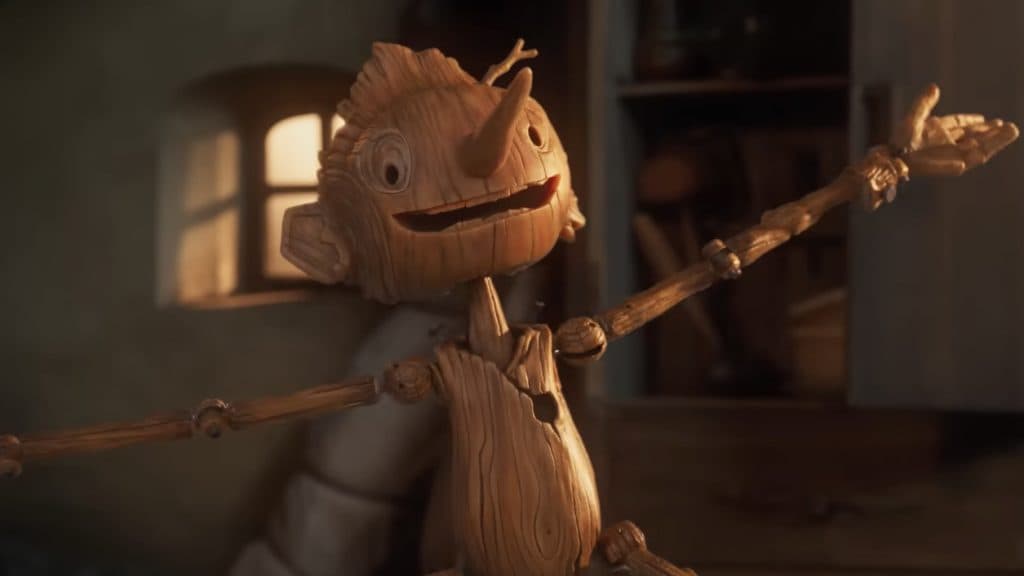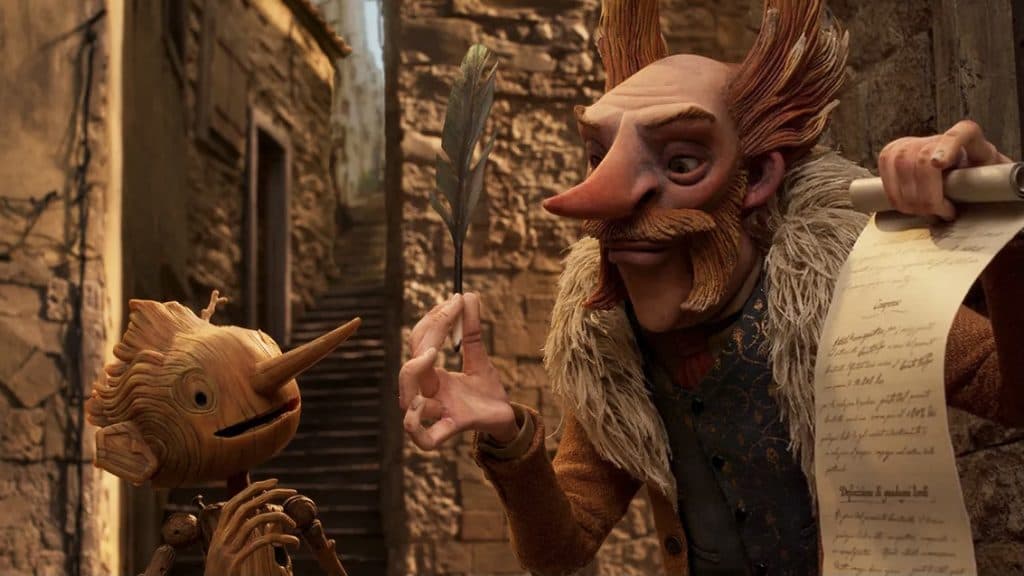Guillermo Del Toro’s Pinocchio review: Stop-motion wonder subverts expectations at every turn
 Netflix
NetflixGuillermo Del Toro’s Pinocchio sets the story of a marionette who wants to be a real boy in 1930s Italy, with the rise of fascism providing a terrifying backdrop, and making a dark fairytale even darker.
It’s frequently unclear why a director’s name forms part of a film’s title. Sometimes it smacks of vanity. On other occasions it looks like a marketing ploy. But in the case of the new Pinocchio, it makes total sense to preface the film with Guillermo Del Toro’s name.
The writer-director’s fingerprints are all over this animated wonder, through plot, through theme, and through stunning stop-motion visuals that bring a near 150-year-old yarn to life.
It also neatly fits with his body of work; the story of a child struggling to navigate the world as the spectre of war looms over them is reminiscent of both The Devil’s Backbone and Pan’s Labyrinth, so-much-so that Pinocchio could be the third film in a trilogy.
What is Pinocchio about?
 Netflix
NetflixDel Toro and co-writers Matthew Robbins and Patrick McHale have cherry-picked characters and situations and scenes from Carlo Collodi’s original novel, so while the overarching tale of a wooden boy wanting to be made real remains the same, much of this Pinocchio is original.
The film starts with scenes that lend real emotional resonance to proceedings. Via voiceover, we’re told that “By the time Master Geppetto made Pinocchio, he’d lost a son.” We then see this play out, in 1916, via montage where father and beloved son Carlo collect pine cones, chop down trees, and work on a church in town.
Then disaster strikes, as planes fly overhead, a bomb is dropped, and the church destroyed, with Carlo inside. It’s a spectacular sequence, perfectly framed and shot, and punctuated by true tragedy as a single pine cone rolls out of the burning building.
The death of his son breaks poor Geppetto. He plants the pine cone, but works little, eats less, and while the tree grows and the years pass, he struggles to move on. Then one night – driven by grief and drink – he chops the tree down and carves it up, creating the figure of a boy.
Geppetto then heads to bed to sleep off the booze, just as spirits from the forest are drawn to his plight, and breathe life into the carving.
Meet Guillermo Del Toro’s Pinocchio
As in the original story, Pinocchio is a curious kid with an inquisitive mind, who likes nothing more than causing mischief. Trouble is, he’s also a bit of a brat, and his relentless cheer makes him unbearable on occasion.
Geppetto is initially scared, then resents the boy, stating “you are not my son.” But he soon accepts Pinocchio, and even takes him to church, where the locals are less forgiving, calling him a monster, a demon, and an abomination, while their priest deems the stranger “unholy.”
Geppetto blames the hatred on their fear of the unknown, but this only precipitates Pinocchio’s desire to be accepted; by becoming the boy that his father so misses, and one that society might accept.
So begins Pinocchio’s adventure proper, where everyone wants to pull his (non-existent) strings. Count Volpe sees a financial opportunity, so lures the boy to his carnival, in scenes reminiscent of Del Toro’s most recent movie, Nightmare Alley. There he’s bullied by a simian creature called Spazzatura, but becomes something of a stage sensation thanks to his song-and-dance act.
His next adventure – and the film is just as episodic as the source material – finds Pinocchio waking in the afterlife, where the film pays tribute to the likes of A Matter of Life and Death and Beetlejuice as he finds himself processed, and learns what being a wooden boy really means. Then the story takes a really dark turn.
Pinocchio vs Mussolini
Where Volpe saw Pinocchio in only monetary terms, fascist officer Podesta sees political opportunity, wanting the wooden boy to join his “elite military project” to train for the glory of Italy, and to make the Fatherland proud.
Though really, he just wants to impress Il Duce. Because this is where Benito Mussolini enters proceedings, the “fearless leader” attending on of Pinocchio’s shows. It’s an unexpected turn of events, but in the context of the story, makes sense, and even seems logical.
Their confrontation has predictably unpleasant consequences, which lead to even nastier goings-on, before the story circles back to Collodi’s original text via a giant sea-beast, a nose that grows, and several wishes being granted. Though maybe not in the way you’re expecting.
Sound, vision and voice
 Netflix
NetflixThe major negative throughout all this is the songs. Disney have already done a musical Pinocchio – twice – and those songs quickly became classics. Here the tunes by Alexandre Desplat – featuring lyrics by Del Toro and Roeban Katz – are forgettable at best, and grating at worst, providing the film with its few low-points.
The visuals are much better. Del Toro co-directed the film with Mark Gustafson, the pair working with the Jim Henson Company and animation studio ShadowMachine, and collectively they’ve created a feast for the eyes. Especially when wind, rain, thunder, and lightening bring gothic intensity to the darker scenes.
The characters are stunning, with those that don’t look like they are made of wood appearing to be carved from stone. The figures are sometimes grotesque, but as ever, Del Toro finds beauty in the shadows.
While the voice cast infuse the characters with life, David Bradley breaking the heart as Geppetto, Ron Perlman striking fear into soul as Podesta, and Christoph Waltz doing what Christoph Waltz does as the devious Count Volpe.
Best of all is Ewan McGregor as Sebastian J Cricket, bringing warmth and charm to the self-proclaimed raconteur, who here is less Pinocchio’s conscience, and more his spiritual guide. Cricket narrates the story, while he’s also responsible for most of the film’s big laughs, proclaiming “one nightmare after another” as he’s knocked and smashed and stomped on throughout the movie. It’s a shame he doesn’t get more screen-time.
The Verdict: Is Pinocchio good?
Unlike Disney’s recent “live-action” Pinocchio that was pretty much a re-tread of the animated classic, Guillermo Del Toro’s version looks to bring something fresh and original to the story, flipping plot and subverting expectation at every turn.
The “Heil Hitlers” are initially a shock to the system, there are times where the amount of death might be too much for young ones, while the religious and political allegory is likely to go over their heads. But this is a smart, sophisticated take on the fairytale, giving Pinocchio socio-historic context while also sending him on a rip-roaring adventure.
The messages are plentiful and positive, about not telling lies, about getting what you give, about accepting people for who they are, and about what makes a good father or son. Oh, and there’s also the most important rule of all – never trust a fascist.
Guillermo Del Toro’s Pinocchio review score: 4/5
Guillermo Del Toro breathes new life into an old story with his take on Pinocchio, a stop-motion wonder where the spirit of the original remains intact, but where the story is given new resonance thanks to the time and place in which its set, as well as several inspired narrative additions. It’s a heady, irresistible mix that would be near-perfect were it not for those terrible songs.
Guillermo Del Toro’s Pinocchio streams on Netflix from December 9, 2022.



